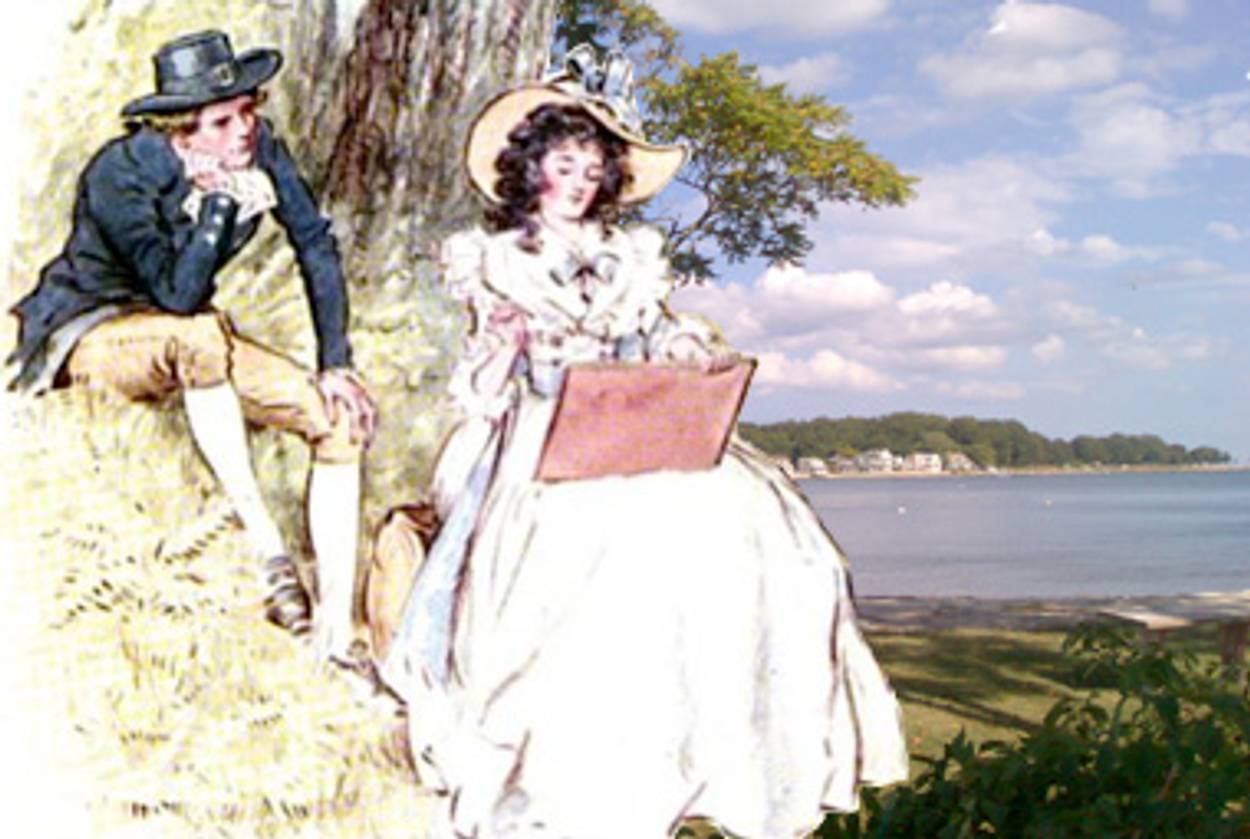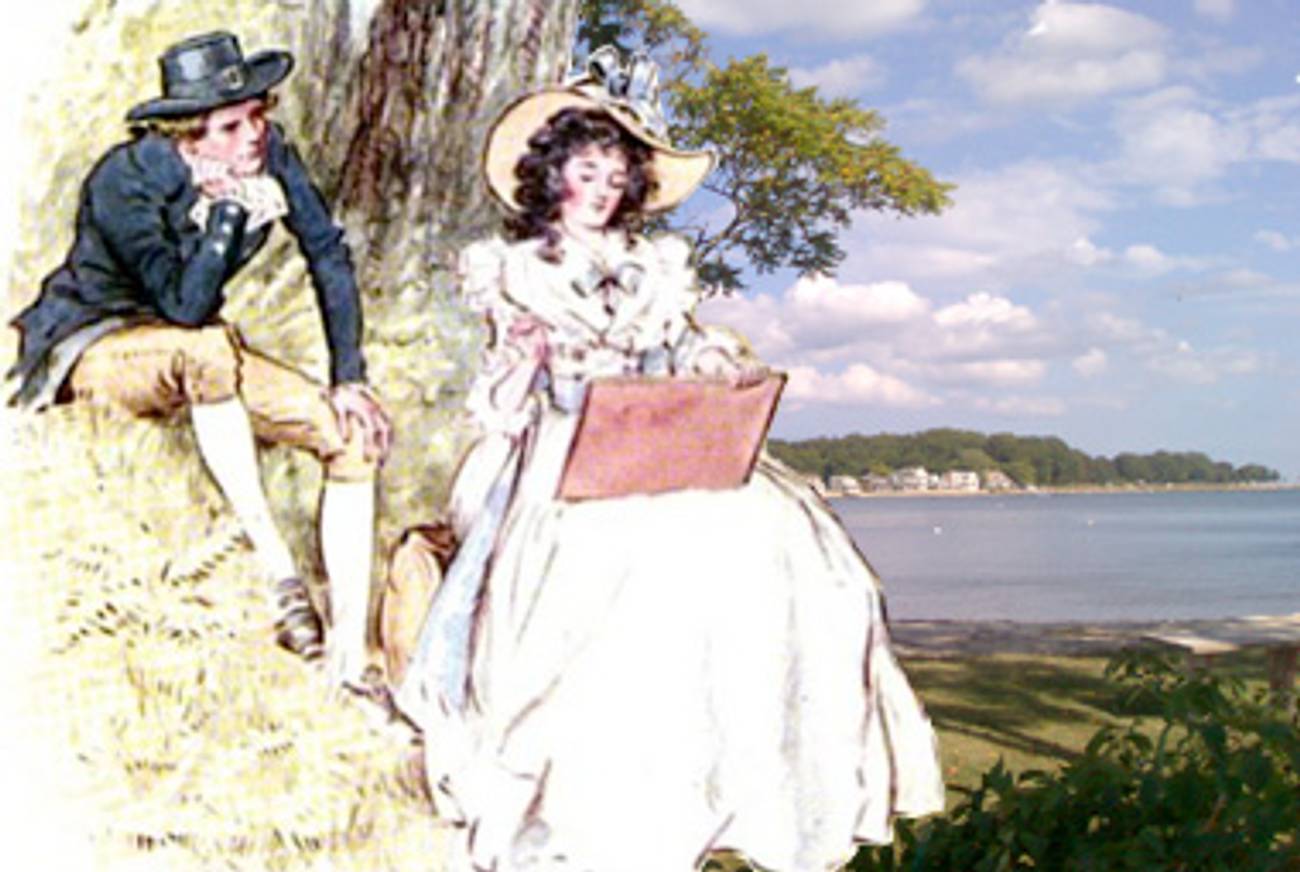Austen in Connecticut
‘Weissmanns of Westport’ resets ‘Sense and Sensibility’ on Long Island Sound




Reading The Three Weissmanns of Westport, the new novel by Cathleen Schine, is a curious experience. Even as you turn the pages, following the genteel misadventures of the titular clan—the aging mother, Betty Weissmann, and her two middle-aged, lovelorn daughters, Annie and Miranda—the book seems literally insubstantial, as though it is about to melt or turn to smoke in your hands. This is less on account of the writing, which is undemanding but intelligent, than of the reader’s realization that the book is only a temporary incarnation of itself. Before Schine wrote it, her novel’s story belonged to Jane Austen—anyone who remembers Sense and Sensibility will recognize that Miranda and Annie are 21st-century, New York Jewish versions of Marianne and Elinor Dashwood, Austen’s hot- and cold-running heroines. And Schine’s high-concept translation of Austen is surely destined for Hollywood, which has already shown a predilection for the work of both Schine (The Love Letter) and her original (examples too numerous to mention).
The property can stand so much recycling because the story Austen devised touches on perennially interesting subjects—love and money, and their constant byproducts, hypocrisy and self-delusion. Sense and Sensibility begins with the ruin of the Dashwood sisters, who lose everything when their father dies and his property passes to his son by a previous marriage. Along with the Dashwoods’ home and income go their social position, and along with their social position goes the likelihood of finding suitable husbands on the Regency marriage market. Elinor, the sensible sister, discovers that the man she counted on, Edward Ferrars, is secretly engaged to someone else; Marianne, the passionate one, falls in love with the handsome Willoughby, who leads her on and then cruelly jilts her. As usually happens in Austen, however, these trials ennoble and educate the heroines so that they are prepared, by the end, for a more mature happiness. Edward Ferrars gets out of his ill-advised engagement when the girl decides to marry his richer brother, and so he is free to marry Elinor at last. Meanwhile, Marianne, who has seen the price of passion, is united with the sober Colonel Brandon.
In taking over this plot, Schine gains the advantages of its universality and simplicity, but also sets herself the technical problem of translating it into our very different social, economic, and psychological world. We no longer have laws of entail, like the one that disinherited the Dashwoods; so Schine substitutes a divorce, which banishes Betty Weissmann from her Central Park West apartment to a relative’s shabby cottage in Westport. Daughters are no longer under their parents’ power, materially or emotionally, the way Marianne and Elinor were; so Schine contrives professional and personal crises for Annie and Miranda, which send them back under their mother’s roof.
Miranda, in a ripped-from-the-headlines touch, is a book agent, who is disgraced when it turns out her memoirists have been making up their traumas, James Frey-style. Like Marianne, she is romantic and temperamental, qualities that Schine does not so much demonstrate as announce: “For the members of Miranda’s family, her unpredictability had become predictable. There were tantrums when she was young; when she was older, a combative dedication to whatever it was to which she was dedicated at the moment, and, at every age, the demands and the drama.” Similarly, to leave the reader in no doubt that Annie is the sensible one, Schine makes her a librarian. Signposts like these make it easy to navigate the book on cruise control. (In case there was any doubt that The Three Weissmanns is meant to be upscale beach reading, the cover shows a plush embroidered chair on a beach.)
The Dashwoods’ love troubles, too, are translated into Weissmannian equivalents. The elusive Edward Ferrars becomes Frederick Barrow, a middle-aged novelist who seduces Annie and then retreats into writerly narcissism. The flighty Willoughby becomes Kit Maybank, an actor whom Miranda loves primarily because his young son brings out her thwarted maternal instincts.
There is even a Colonel Brandon figure, the shadowy Roberts, a semiretired lawyer who helps Betty Weissmann with her divorce. The romantic equations do not balance quite as neatly in Schine as they do in Austen, but there is so little at stake with these thinly drawn characters that it hardly matters.
None of these rough-and-ready equivalents, it must be said, will bear much readerly skepticism. Betty Weissmann is bizarrely passive when her husband of 50 years, Joseph, kicks her out on the street; for all the complaints we hear about her and Miranda’s newfound poverty, their lifestyle never seems to change; even Annie, who is in her fifties and the widowed mother of two boys, never acts with the toughness or resourcefulness her life experience should have taught her. In short, the kind of deprivation that meant disaster in Austen’s novel becomes, in Schine’s, a rather jolly holiday, the kind of vacation from middle-class life that only the securely middle-class reader can dream about. Miranda Weissmann even plays out the ultimate anti-feminist fantasy, leaving the big city and her challenging career for a life of gardening and babysitting in Connecticut.
But the most unusual of Schine’s choices has to do with her characters’ Jewishness, which the title so clearly insists on. The Weissmanns are portrayed as highly assimilated—they remember that it’s Hanukkah only while celebrating Christmas Eve and mark Rosh Hashanah with a dinner party, not by going to synagogue. Yet when Miranda imagines God, He speaks with a “Yiddish lilt,” and when she eats shellfish at a party she imagines being punished with food poisoning. This residual Jewishness is a source of comedy, but it also seems to carry a deeper sociological meaning. For Austen’s plot to make any kind of sense today, Schine needed to find a rough contemporary equivalent for Austen’s gentry, the class background against which all of her characters conduct their marital maneuvers. There is really nothing like that gentry in 21st century America: a self-contained, rigidly hierarchical caste, which prefers inheriting money to making it, and lives by a set of codified manners that are almost more important than morals.
Certainly this does not describe the life lived by American Jews—yet it is precisely in the Weissmann’s Jewish milieu that Schine finds her equivalent to Austen’s gentry. In fact, the comic premise of The Three Weissmanns of Westport—Jane Austen, but with Jews!—is less striking than the tacit assumption that readers, including non-Jewish readers, will accept the New York Jewish upper-bourgeoisie as an equivalent of Austen’s milieu. No very great likeness is needed: it is enough that the Jewish world can be plausibly imagined as affluent, family-centered, and—above all—self-contained, so that the characters can keep running into one another as the plot demands. Schine’s story did not used to be Jewish, and if history is any guide, it will not stay Jewish once it becomes a movie; but in its current incarnation, its Jewishness may be the most intriguing thing about it.
Adam Kirsch is a poet and literary critic, whose books include The People and the Books: 18 Classics of Jewish Literature.
Adam Kirsch is a poet and literary critic, whose books include The People and the Books: 18 Classics of Jewish Literature.